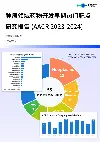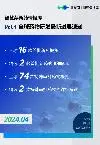American Air Is Getting Cleaner, But Benefits Aren't Reaching All
2024-01-17
WEDNESDAY, Jan. 17, 2024 -- An American's income and ethnicity could play a role in how clean the air is that they breathe, a new study finds.
Air pollution emissions have fallen more in wealthier areas, and less in areas with larger Hispanic or American Indian populations.
Overall, U.S. air pollution emissions have decreased substantially, but the magnitude of the change varies based on demographics, the researchers found.
“Policies specifically targeting reductions in overburdened populations could support more just reductions in air pollution and reduce disparities in air pollution exposure,” said lead researcher Yanelli Nunez, an environmental health scientist with Columbia University’s Mailman School of Public Health in New York City.
“This is an important lesson gained from 53 years of Clean Air Act implementation, which is particularly relevant as we develop policies to transition to renewable energy sources, which will have a collateral impact on air quality and, as a result, on public health,” Nunez added in a university news release.
For the study, Nunez' team analyzed emissions data from the Global Burden of Disease Major Air Pollution Sources inventory, a collaborative academic project involving three different universities.
On average, U.S. air pollution emissions declined substantially from 1970 to 2010 from all sources, except for ammonia emissions from agriculture fertilizer and organic carbon particle emissions from indoor heating of the residential sector, researchers said.
Despite this overall downward trend, certain groups of people experienced relatively smaller reductions or even increases in air pollution, the team found.
For example, counties with a larger percentage of Hispanics or American Indians tended to have relative increases in air pollution from sulfur dioxide, nitrogen oxides and ammonia, data revealed.
Further, the overall reduction in emissions tended to be even greater in counties with a higher average family income.
The new study was published Jan. 17 in the journal Nature Communications.
“Air pollution emissions do not perfectly capture population air pollution exposure, and we also know that neighborhood-level air pollution inequities are common,” said senior researcher Marianthi-Anna Kioumourtzoglou, an associate professor of environmental health sciences at Columbia Mailman School.
Sources
Columbia University, news release, Jan. 17, 2024
Disclaimer: Statistical data in medical articles provide general trends and do not pertain to individuals. Individual factors can vary greatly. Always seek personalized medical advice for individual healthcare decisions.
Posted January 2024
More news resources
FDA Medwatch Drug Alerts
Daily MedNews
News for Health Professionals
New Drug Approvals
New Drug Applications
Drug Shortages
Clinical Trial Results
Generic Drug Approvals
Subscribe to our newsletter
Whatever your topic of interest, subscribe to our newsletters to get the best of Drugs.com in your inbox.
更多内容,请访问原始网站
文中所述内容并不反映新药情报库及其所属公司任何意见及观点,如有版权侵扰或错误之处,请及时联系我们,我们会在24小时内配合处理。
适应症
-靶点
-药物
-热门报告
立即开始免费试用!
智慧芽新药情报库是智慧芽专为生命科学人士构建的基于AI的创新药情报平台,助您全方位提升您的研发与决策效率。
立即开始数据试用!
智慧芽新药库数据也通过智慧芽数据服务平台,以API或者数据包形式对外开放,助您更加充分利用智慧芽新药情报信息。




